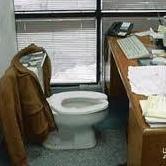Leaderboard
Popular Content
Showing content with the highest reputation on 01/24/2015 in all areas
-
This may not be exactly relative to your situation, but I'll post it anyhow. I once had a client who was selling his business to another company. The lawyer kept telling me it was a non-taxable event because of the way he had it structured. I kept telling him there was no way, but invited him to give me any tax-specific cites he could provide. He sent me a quirkly little article written by another lawyer, but it just tap danced around the tax implications. I finally asked him if he would be interested in preparing the return, which of course he was not. But he kept insisting that this was commonly done, and he knew lots of CPA's & tax preparers who were following his advice. TRAP SPRUNG ! I asked him to provide my client with the names of 2 or 3 tax pros so the client could retain one of them to prepare the return. I told the client I would not follow the attorney's advice and that he should be giving the client a referral. Last I heard, the attorney never followed through and I think the client self-prepared his own return. (I think 7 years have passed, so the fact is he probably got away with it. But in any case it wasn't my problem.)3 points
-
Aaawww - I see. I remember something like that. And then people stopped bringing me food. Go figure! Does a bag of pretzels and a reese's peanut butter cup count? That is what I had between pages today. So THAT is what a lunch is.3 points
-
You are exactly correct. The complexity starts with those that are not insured for the whole year, or those that have coverage purchased through an exchange.2 points
-
2 points
-
Here is a plain english article that I copied from the website of CliftonLarsonAllen which will give you an overview of what you're dealing with: Contractors may have an opportunity to save on construction and building costs based on the IRS’s recent overhaul of the regulations that govern the handling of expenditures to produce, acquire, or improve tangible property. But first you have to clarify whether your expenditure is considered a repair or improvement, among other considerations. Also, on August 14, the IRS released final regulations on the disposition of tangible depreciable property. So if repairs or improvements were properly capitalized in prior years, a partial disposition loss for the old components might be claimed with an accounting method change to write-off what was previously capitalized. Improvements or repairs Improvements are attributed to one of three areas: betterments, adaptations, or restorations (often called the “BAR” test). Betterments are a material addition to a unit of property (UOP) or a material increase in capacity to correct a material condition or defect that exists prior to acquisition or during production. Adaptations are putting a UOP to a new or different use that is not consistent with the ordinary use of the property at the time it was first placed in service. Restorations include returning a UOP to its ordinary operating condition after it deteriorated to a state of disrepair, or rebuilding a UOP to like-new condition after the end of its IRS defined class life. Replacing a part that comprises a major component or substantial structural part of a UOP also constitutes a restoration. When applying the BAR test to a building, the regulations separate the building into the building structure (roof, walls, windows, floors, and ceilings) and eight defined building systems (HVAC, plumbing, electrical, escalators, elevators, fire-protection and alarm, security, and gas distribution). Activities that are not considered an improvement can often be deducted as a repair and maintenance expense. For instance, building refresh costs (e.g., cosmetic changes such as power washing walls and repainting, cleaning or resealing wood floors), most likely should be deductible. However, if remodeling involves replacing large parts of the exterior walls or upgrading the electrical system, these costs most likely should be capitalized. BAR test example A contractor uses equipment for highway and road construction operations. Each independently operable piece of equipment is a UOP with a class life of six years. The contractor does scheduled maintenance every so often such as cleaning the engine, oiling specific parts, inspecting parts for defects, and replacing items such as springs, bearings and seals. The BAR test determines that these costs are deductible repairs and maintenance expenses, since they do not materially increase capacity, adapt the equipment to a new use, or rebuild to like-new condition. However, if the equipment was reconfigured with additional components that enhance its capacity, then it may be considered betterment and those costs would need to be capitalized as improvement. De minimis safe harbor rule If a company has an applicable financial statement (AFS) and a written book capitalization policy in place at the beginning of the tax year, then it can deduct items below this threshold but not in excess of $5,000 per invoice or per item. An AFS is defined as a financial statement filed with the Securities Exchange Commission (SEC), a certified audited financial statement by an independent CPA, or a financial statement required to be provided to a federal or state government or agency. If you don't have an AFS, you may still be able to deduct up to $500 per invoice or per item if the other requirements are met. This is an annual election made on a timely filed original tax return. Routine maintenance safe harbor rule Recurring costs to keep property in ordinary operating condition can also be deducted, when the costs are reasonably expected to occur more than once within the class life of the property. Safe harbor rule example Machinery and equipment used in road construction may need to be serviced more than once during its class life (six years), which may require disassembly, cleaning, inspection, repairs, replacement, reassembly, and testing of its component parts. (Buildings use a 10-year period class life.) So if you own a building and service the HVAC units every four years — especially if within the maintenance interval recommended by the manufacturer — these costs should be deductible. Finally, costs with longer intervals might still be deductible on a facts and circumstances basis, but would fall outside of the safe harbor rule. Disposition rules applicable to 2013 and 2014 tax returns Disposing of an entire unit of property requires the recognition of gain or loss. Partial dispositions (i.e., a disposition of less than an entire UOP) were generally not allowed in the past, but the new regulations allow for this if an election is made in the year of the disposition. You can still make this election on 2013 and 2014 tax returns for dispositions that occurred in previous tax years. It would be beneficial to make this election where repairs to a roof were capitalized in prior years (regardless of the refund statute being closed for the year), so the net tax value of the old roof at the beginning of the 2013 or 2014 tax year can be written-off. In addition, the costs of removing an asset should follow the initial treatment of the asset. So if the old asset is treated as disposed, then removal costs are part of the disposition (i.e., increase the loss or reduce the recognized gain). If the old asset is not treated as disposed, removal costs are deducted or capitalized based on whether they directly benefit a capitalized improvement. How you can benefit from the new rules If repairs or improvements have been performed on tangible property in prior years, there may be an opportunity for claiming additional deductions. Items that were capitalized in prior years due to a conservative approach and/or just following GAAP treatment might be claimed with an accounting method change to write-off what was previously capitalized as deductible repairs. Also, if improvements were properly capitalized in prior years, there may be a chance to claim a partial disposition loss for the old components that were removed. On the flip side, you can get audit protection if you have been under-capitalizing repair expenditures and then finance the resulting taxes over a four-year period with no interest or penalties2 points
-
It appears that the software is not pulling Column C correctly in Part 2 when there is only partial year coverage. It takes Box 8b correctly until you get to the last month and then it plugs the difference between the annual contribution (8a) and what has been used in the previous months. We can't find anything in the instructions to say that anything other than Box 8b should pull into Column C of the monthly calculations. Thanks. I also noticed that the calculations on line 23 for December were not populating correctly. I put in the correct amounts and lowered the payback considerably. I understand that there will be a fix for this next week; so be sure to check your 8962 carefully.2 points
-
>> He commented to me that there isn't really anybody checking this stuff, so a lot of people don't even file the 1099 Misc.<< Implying that you should not report it on the income tax return?2 points
-
Yeah, I had the same thought. A lot of pricing discrepancies are the result of location and culture. You are somewhat higher than my minimum but I live in Podunk USA where the cost of living is less. My minimum get out of bed fee this year is $200, higher for business returns. I had an email from a multi year client (a PITA client I might add) stating that he did not have much activity in his S-Corp last year so he is wondering how much I am going to charge him and "oh, I need it done by the end of January". I email him back a quote of $500 because in PA, S-Corps are never that easy, even with minimal activity and the end of January is problematic because the forms may not be available and I may not be doing returns yet by then. He emails me back saying he is going to have to shop around - for his own peace of mind. Well, if and when he gets back to me, the price just went up a $100. And if he balks one iota I will tell him to not let the door hit him in the back side. He is one that does not really fit my client profile so if this is a parting of the ways, no big deal. The vast majority of my clients would never treat my firms services as a commodity and do appreciate our work and will pay what I bill them without hesitation.2 points
-
This is the last season for me and I am not sure I am going to make it through the whole season. I cannot find a cite that states we have to use the W-2 for preparation and not the last pay stub but I know we have to. I have a client that has made an appt. called 7 times and even had her MIL call then the last call was...I don't have husband's W-2 but we can use his last pay stub. Sorry....make another appt after you have the W-2. She makes an appt for Monday but doesn't have the W-2 yet...really? Please tell me where to get the cite so I can include it in her packet to take home. Another client called, made a appt. didn't show up, called the next day and said her boyfriend didn't know about the appt so he let her sleep. She wanted another appt as soon as possible but was told that 3 people wanted her original appt time and I was booked for 2 weeks. Another local bookkeeper e-mailed me so I could create 1099-MISC for one of her clients. She did forget to put amounts in the e-mail. Last year I did this for her and she called a couple days later to say that the amount was incorrect and I needed to re-do the 1099-MISC. This year I told her that I didn't buy the software. Mostly rant and thanks, Karen1 point
-
Just want to make sure my understanding is correct: If taxpayer(s) had health insurance or COBRA for the entire year through their employer or purchased on their own (not through the exchange), including those on Medicare, all that needs to be done is to check box 61 on form 1040? No additional forms need to be completed? Thanks very much.1 point
-
1 point
-
I'm using Word 2010 but the envelope function should work the same. When I prepared the envelopes I currently have as a saved doc, I went to the block where the return address is entered and used the "enter" key to space down a few spaces until I was down to where I wanted the phrase to appear. I used large capitals in bold and split the phrase into 2 lines so it didn't run over into the name or mailing address. If you've already saved the envelope, you can add the phrase by clicking at the end of the last line of the return address and doing the same thing - space down.1 point
-
I gave them all a pound of home-made peanut brittle for Christmas. Comfort food stays in peoples' memories a long time!!1 point
-
I'm no expert on OH taxes, but in answer to your "asked me if she still needs to file year after year." I'd just point out to her that she has to have a legal domicile somewhere, so having it there where she's exempt may be a wise thing to hang on to.1 point
-
AH!!!!! My husband walked into my office and asked me if I would like to go out for lunch. Friday; big fish fry day in Wisconsin. We went. He drove my car, but he was my dinner guest. I'll take it any way I can get it.1 point
-
This was posted on the Drake forum today (by Merry)...........We are working on getting the Marketplace Coverage Affordability Worksheet in the software. The update should be posted around mid-week (next week). I will post when I see it.1 point
-
I know it is early in the game for this kind of comment, but the facts are the facts, what's a lunch, Jack and Eric?1 point
-
1 point
-
Not acceptable, says the state of Massachusetts. File cabinets and desks must have locks; ALL client files must be in and locked whenever you are away. They do NOT care if you are the only one in the building, or that you are locking the door to your office while you dash to your car for the second load of office supplies from staples that you left for later, or that your office is locked. Plus encryption on ALL disks and drives. Plus NO ssn's on paper copies. Plus password-protected pdf's of ALL documents on CD's given to clients. The usual one-size-fits-none regulations: what might make sense in a huge company with cubicles does not make sense for me and vice-versa. The intent is to "prevent" identity theft. They could have merely said, "if someone's id gets stolen and it's traced to you, you're dead meat" and let me (and all others) figure how to protect the data. Instead, they have to micro-manage every paperclip.1 point
-
I am SO jealous. Cleaning Lady? You can't even see the top of my kitchen table which still has the Christmas tablecloth on it. We had the carpenter who is working on our enclosed porch and my assistant for lunch today. Had to move around papers so we could all sit at the table. My assistant actually furnished the lunch of homemade bean soup and homemade bread. What a blessing. My office is the cleanest room in the house because it is the newest. One of the few things I insisted upon when we were building my office addition, was a deadbolt lock in addition to the other lock. Also, the full door glass has the blind between the panes of glass so it can be opened during the day and closed at night and on weekends. NO dust on THAT blind.1 point
-
So Illmas, that surely saves you a lot of time! Hopefully it isn't the one used by the clients too - how awkward!!!1 point
-
1 point
-
I saw Rita B in the upper right of the picture; pushing toward the front row. Right behind her is Judy.1 point
-
1 point
-
I have stuff in the guest room across the hall and stuff under my desk and under my other desk. And, now with no clients around I have about a dozen stacks on my desk, four stacks stuffed in the bookshelves on top of the neatly aligned folders, another half dozen stacks on my other desk, and another half dozen crates, shopping bags, etc. on the floor! And, don't even get me started on my own tax returns/documents for the last half dozen years in a huge stack totally unassembled in the closet, almost reaching to the pole. I will clean before clients arrive in February. Except for the closet and guest room. My office looked like the pictures for about 12 hours!1 point















